Do you have some of our seeds? Follow Nat’s planting instructions for best results.
Bradford Watermelons prefer a sandy loam soil that is high in organic content and drains freely. Choose a location that best fits that soil condition in all day sun.
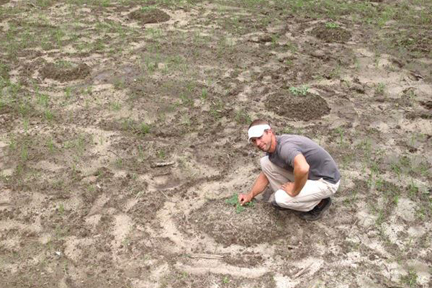 Cultivate the soil for the watermelon patch allowing approximately 40 square feet of growing space per plant. I prefer to lay out my patch in rows of hills spaced 8 feet apart on center from hill to hill and spacing between rows 10 feet apart on center. Each planting hill supports 2 plants.
Cultivate the soil for the watermelon patch allowing approximately 40 square feet of growing space per plant. I prefer to lay out my patch in rows of hills spaced 8 feet apart on center from hill to hill and spacing between rows 10 feet apart on center. Each planting hill supports 2 plants.
To create your hills, dig a shallow hole about 6 to 8 inches in depth by about 18 inches across and fill the hole with well composted stable manure. Create mounds or hills over the manure using excavated soil from the hole about 8-10 inches high by 3 feet wide and flat on top.
You may begin planting seeds directly into the soil when day time temperatures are consistently in the 80s and the soil temperature is warm. Place 12 seeds in the center of the mound about a half inch but no more than one inch deep. Make sure seeds are spaced out about an inch or so apart in the mound. Lightly tamp the soil over the seeds to settle out the soil and carefully water them in if desired to speed germination.
 Once the seeds have germinated, monitor them for vigor. The first five or six plants to achieve their first set of true leaves are keepers. Cull the rest. The next thinning will be to choose the strongest and most vigorous vines once the flop over and begin to vine across the ground. Cull the others by snipping them off at ground level rather than pulling them out and disturbing the keepers.
Once the seeds have germinated, monitor them for vigor. The first five or six plants to achieve their first set of true leaves are keepers. Cull the rest. The next thinning will be to choose the strongest and most vigorous vines once the flop over and begin to vine across the ground. Cull the others by snipping them off at ground level rather than pulling them out and disturbing the keepers.
At the time of the choosing the last 2 vines per mound, side dress the mounds with well composted stable manure at a rate of 4 rounded shovelfuls per mound along with one round shovelful of well composted poultry manure. Do not place on the mound! Scatter around the perimeter of the mound.
Tilling for weed control is good as long as there is access in the patch. Hand weed everything else. Limit walking and compacting the soil. Limit handling and disturbing the vines. Once the patch is covered with vines stay out. Resist the urge to walk through the vines and even pull weeds. Some weeds in the patch will not affect the melons at all. Compacting the soil will.
 When Bradford Watermelons reach full size and a rich lustrous solid green, begin checking for ripeness. In South Carolina, it’s about 85 days from planting. There is a small tendril just opposite the stem. When it turns brown, and withered, it is a few days of being ripe. The thump test is the best way to tell after the tendril turns. It should sound solid when thumped. Immature melons have an echo sound like ping-ping. Ripe melons have a dull flat sound like punk-punk.Visit our YouTube channel here to see Nat checking Bradford Watermelons for ripeness.
When Bradford Watermelons reach full size and a rich lustrous solid green, begin checking for ripeness. In South Carolina, it’s about 85 days from planting. There is a small tendril just opposite the stem. When it turns brown, and withered, it is a few days of being ripe. The thump test is the best way to tell after the tendril turns. It should sound solid when thumped. Immature melons have an echo sound like ping-ping. Ripe melons have a dull flat sound like punk-punk.Visit our YouTube channel here to see Nat checking Bradford Watermelons for ripeness.
I have been growing our Bradford Family Watermelon for more than 30 years. I still learn more every year. Allow yourself to make some mistakes and learn as well. The joy of growing a Bradford Watermelon from seed to a 40 pound fruit, though challenging, is hard to beat and well worth the reward!
Good luck!
Nat Bradford
7th generation Bradford Family Watermelon Farmer
-
Out of stock 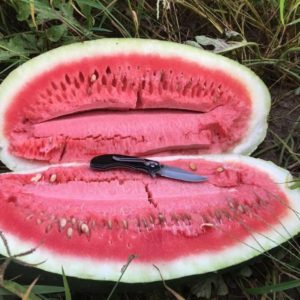
BUY A GENUINE BRADFORD WATERMELON ~ PICKUP ONLY! — 2023 Bradford Watermelon Presales announcement and terms: Due to the high number of requests to reserve Bradford Watermelons and the limited supply available, and in order to assure you, our valued customers, are guaranteed your reserved watermelon, we are pre-selling through our website. These watermelons will be reserved for pickup (NOT DELIVERED OR SHIPPED) at the Bradford Farm in Sumter, SC for 7 days at the first of harvest. Anticipated harvest is mid to late August. Because we are reserving perishable produce, purchases are non-refundable. Barring unforeseen environmental disaster and our crop is destroyed, or you are not able to pick up your watermelon, we will honor the purchase in our online store for other products or other fresh produce from the farm. Where: Bradford Family Farm, 5275 Dubose Siding Rd., Sumter, SC; Pickup only. WE DO NOT DELIVER OR SHIP. When: Estimated availability is mid to late August. We will confirm the exact dates when harvest time nears. Bradford Watermelons are $20 each *PLEASE BE SURE TO INCLUDE BOTH AN EMAIL AND PHONE NUMBER WHERE WE CAN REACH YOU TO NOTIFY YOU OF HARVEST AND PICKUP DATES!
$20.00 -
Out of stock 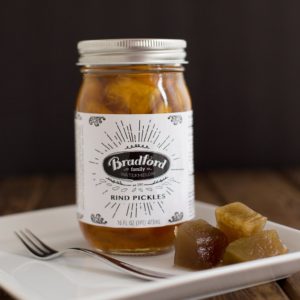
Watermelon Pickles – 2 Jars
$21.00 -

Watermelon Brandy
$9,999.00 -
Out of stock 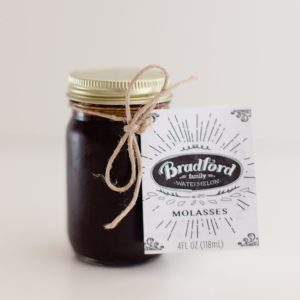
Watermelon Molasses (dark) – 2 Jars
$39.00 -
Out of stock 
Watermelon Molasses (dark) – 1 Jar
$19.50 -
Out of stock 
Watermelon Pickles – 3 Jars
$26.00 -
Out of stock 
Watermelon Pickles – 1 Jar
$14.00 -
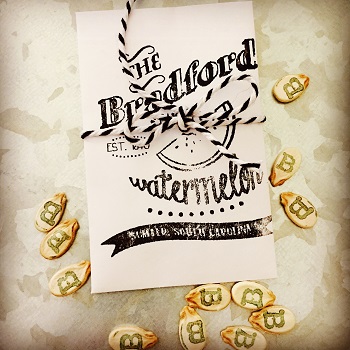
Watermelon Seeds
$10.00
